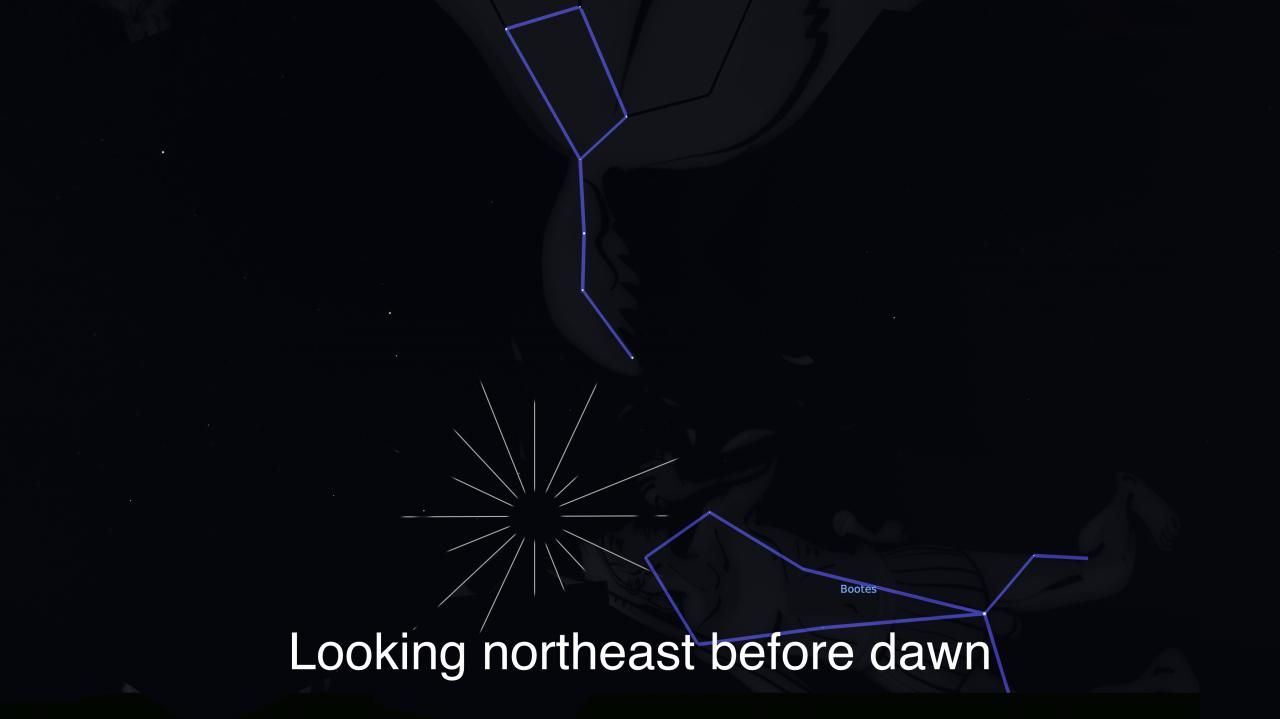Look up for the Quadrantids meteor shower

The Quadrantid meteor shower peaks Wednesday night, January 3 into the following morning. With clouds and possible rain expected Wednesday afternoon, best viewing will be in the hours before sunrise Thursday morning.
The Quadrantids are classified as a major meteor shower with rates similar to the Perseids in August and the Geminids in December, but don't get as much attention.
This is likely because the source of the meteors, the stream of dust and rock left behind by asteroid 2003 EH1, is very narrow making for a show lasting only a few hours. Quadrantids also tend not to be as bright as meteors from other major showers.
The radiant point, or spot in the sky where meteors appear to be coming from, is in the northern part of the constellation
Meteor showers are named for the constellation they appear to originate from. For the Quadrantid, this is Boötes, near the handle of the big dipper. So why isn't this shower called the Bootids?
The name is a throwback to a name for this part of the sky that astronomers stopped using more than 100 years ago. The constellation Quadrans Muralis was named by French astronomer Joseph Jérôme de Lalande in the late 1800s for the quadrant on the wall of his observatory (muralis is Latin for wall) .
This uninspired constellation was replaced by Boötes, Latin for plowman, which to the left (or beneath this time of year) the big dipper which ancient Greeks thought looked more like a plow with oxen.
Meteor watching tips
- give your eyes time to adjust to the darkness, at least 15 minutes
- be patient, the longer you look, the more meteors you will see
- look to the darkest part of the sky
- best viewing will around 5 a.m. until dawn Thursday
- bundle up, temperatures in the upper 30s to low 40s are expected









